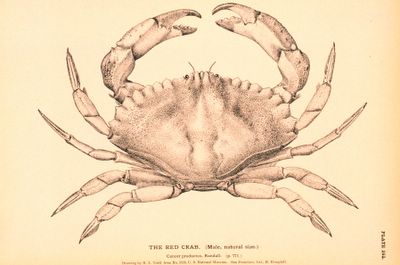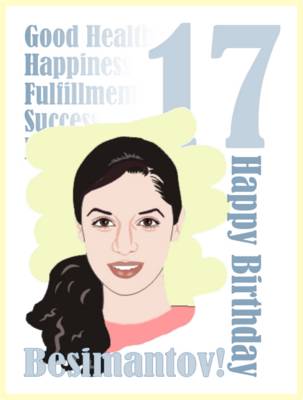
Thursday, March 13, 2008
Monday, January 21, 2008
Rings around the moon

The "ring around the moon" effect (or "lunar halo") is caused by the refraction of moonlight by ice crystals in the upper atmosphere. The regular hexagonal shape of the crystals results in a focusing of the light into a ring. The angular size of a ring is generally either 22 or (more rarely) 46 degrees - ours tonight being the latter.
To the naked eye the moon actually looked smaller than it appears in this photo, and the halo was brighter. The effect was of a huge, cathedral-like dome in the sky, almost directly overhead, with the round moon being a Pantheon-like opening to a bright sky (or heaven) beyond. Note that the inner edge of the ring is distinct, while the outer edge is blurred, which contributes to the illusion of a dome. Awe-inspiring.
In our experience the effect always happens at near full-moon (tonight is 14th Shevat).
Here's a profesisonal photo of a 22 degree halo from NASA:

Very occasionally there may be two rings, one within the other. I've never seen this in real life, but here's a nice picture I found on the Internet:

According to this site folklore has it that a ring around the moon signifies the approach of bad weather, and in many cases this may be true. You see, the ice crystals that cover the halo are actually part of thin, high-altitude cirrus clouds that generally precede a warm front by one or two days. A warm front is typically associated with a low pressure system, or in other words a storm.
It is also sometimes said that the number of stars within a moon halo indicate the number days before the bad weather arrives. Well, ours had just one star (and another on the border) so let's see what happens in the next two days!When there's a ring around the moon
Rain or snow is coming soon
Wednesday, July 18, 2007
Chinese Signature Seals
Signature seals are used in China and other parts of East Asia to prove identity on documents, contracts, art, and so on. They are typically made of stone, sometimes of wood or metal, and are used with a bright red paste made with ground cinnabar, castor oil and silk strands. The seal is colloquially referred to as a “chop” while its imprint is a “yin”. When you dip the end of the seal in the red paste and stamp it onto paper, it produces a seal like one of these:
The Chinese letters on the chop may be in relief (left) or engraved (right). Both can be produced to a high quality, as in the examples above, but it is the latter form that is generally used for the low-cost tourist versions, scratched into the stone hurriedly with one eye on the till, as the customer wanders around the shop impatiently.
The examples above show the same name carved in (left to right): old fashioned Chinese script in relief, more traditional Chinese script in relief, and a simpler, engraved version.
Most people in China possess a personal chop. Artists, scholars, collectors and intellectuals may possess several different versions of their name, as well as seals that express a mood (such as “tranquillity” or “happiness”), and studio or business seals. They may be carved by specialist seal carvers or by the users themselves. They are therefore often not merely a signature but an expression of individuality, frame-of-mind and style. One or more may be affixed to documents, works of art and so on. Chinese artists use their chop to sign their art (see left), but art owners may also add their chop to the painting, both to signify ownership and as a tribute to the work. These additions are traditional, and as long as they do not obstruct the artwork, are considered a compliment to the artist.
Transliterating foreign names
A problem posed in creating chops for non-Chinese names is how to “transliterate” them. Each syllable can be written many hundreds of ways in Chinese. Ideally one would select versions that are meaningful to person in question. Failing that, they would choose syllables with happy or auspicious connotations.

A free online tool produced these symbols for my "Jonathan", instructing me that it had used “-san” rather than “-tan” as the last syllable (somehow that does sound more Chinese). Surnames are not usually included in chops. Obviously it would be a little hard to fit them on a chop. One would have to be streched and the other two compressed. (The syllables actually used on my chop are different.)
To be continued...
Thursday, August 03, 2006
Avney Hachoshen
The exact identities of all the stones on the high-priest's breastplate are not known. Those shown below are only some of the possibilities mentioned in Jewish source materiel (itself based to some extent on speculation).
At first we may tend to think of the breastplate in terms of modern jewellery, set with sparkling "precious stones"; however we must not forget that tastes, availability, and relative prices have changed greatly since biblical times, and that stones we today call "semi-precious" and consider less prestigious, such as Lapis Lazuli, Carnelian and Turquoise, were the stones chosen to be inlaid in the gold icons of Tutankhamen - for example - rather than sapphires, rubies and emeralds.
Click on the picture below to seea legible version.

Notes:
1) I have arranged the rows from right to left - the "Hebrew" way.
2) I have put Yissachar and Zevulun immediately after their full brothers, rather than in strict chronological order (following Asher). This is also a matter of dispute.
3) I have included Dalmatian Jasper and Moss Agate as a matter of interest, because scientifically they are considered the "same" as red jasper and blue agate respectively; however it is unlikely that they would be considered the same stone for the purposes of the breastplate, where color and appearance determined the choice of stone (as is clear from their Hebrew names).
Monday, July 31, 2006
Crab Fight
After Yakov told his Grandpa that he saw two crabs on the beach fighting, a red one and a yellow one, Grandpa asked him "And which one was winning?"
Without missing a beat he responded with the following metaphysical truth...

"They were both loosing."
Thursday, June 09, 2005
Astronomy Picture of the Day

I've always found astronomy pictures fascinating to look at and and think about. But I do think it's a shame when people just look at the beauiful pictures and say "wow" without trying to find out what the picture actually is!
Click on this link to see NASA's Astronomy Picture for today (and an explanation of what it is).
Monday, December 27, 2004
Shelly's birthday

But the real fun is that Gail doesn't just draw faces. She creates a whole paper doll booklet, with a custom cover and 15 cut-out outfits, based on your preferences! The booklet comes with a plastic clip that can be used to stand the doll up for display. You can see Gail's site by clicking here; isn't it a cute idea?!
I added the "head" of Shelly's doll to a few of the outfits, removed the tabs, and then put them side by side in the picture below. You can click on the picture to enlarge it.

Nice aren't they! Which outfit do you think suits her best?


